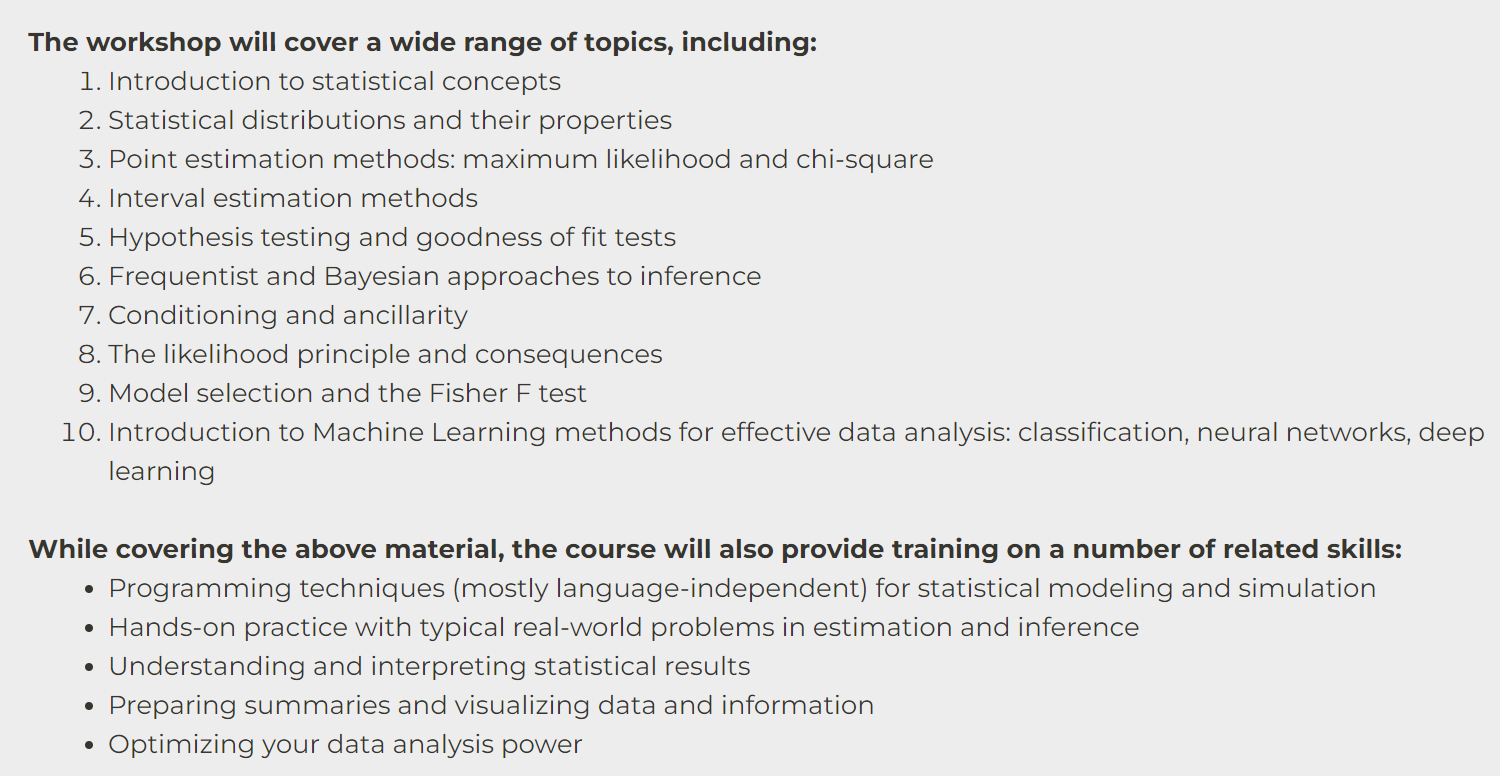Until tomorrow (January 15) at 16 CET you can still register to the course at the seminar page of the INSTATS site, but I have to forewarn you - unlike the introductory seminar I gave there a month ago (which was followed online by over 400 participants!), this one is for a fee. On the plus side, we will be fewer in the class, and there will be ample time for questions and discussion. The course will also be recorded and available for offline subscription and use after its end.
The contents of the course span from the very basic concepts - which are absolutely unavoidable if you want to get a grip of how to really make correct inference from your data - to rather advanced concepts that few of my colleagues know (I occasionally run a poll with the PhD students I teach at a similar course in Padova, and over the years I have figured out that e.g. less than 5% of them know what is ancillarity, a concept that can really make a difference in the power of your information extraction procedures). But the course is actually steering away from theoretical statistics and is rather centered on practical use of the main techniques. Below is a quick summary of the contents.

As I give the final touches to the material I wish to cover, I realize that the main problem I have is to tailor the level of the discussion to that of the audience. 50% of the users who subscribed are university students, and 50% are researchers or professionals. They not only have a different background, quite different intended fields of application, and base knowledge of the topic, but they are also more interested in different parts of the course.
With 15 hours to cover the above quite wide program, I need to gauge where to give more emphasis. I will have to strike in the middle, trying for balance, and then help myself with questions and the online chat forum for additional input on where to give a bit more detail. All in all, it is a slightly different setup from that I am used to (university courses for PhD students), so this is making the whole thing interesting. I plan to write a "lessons learned" post here in a month, where I will be able to assess what worked and where improvements could be possible...





Comments